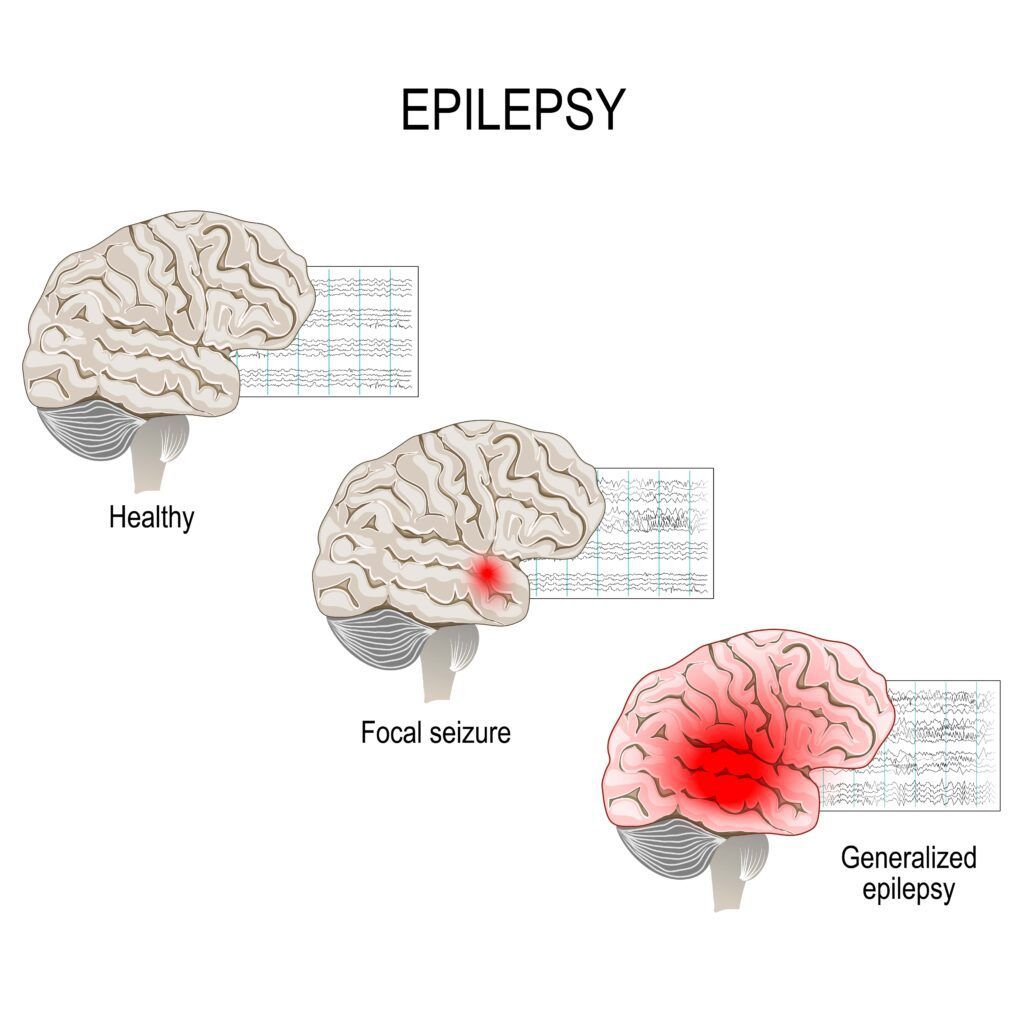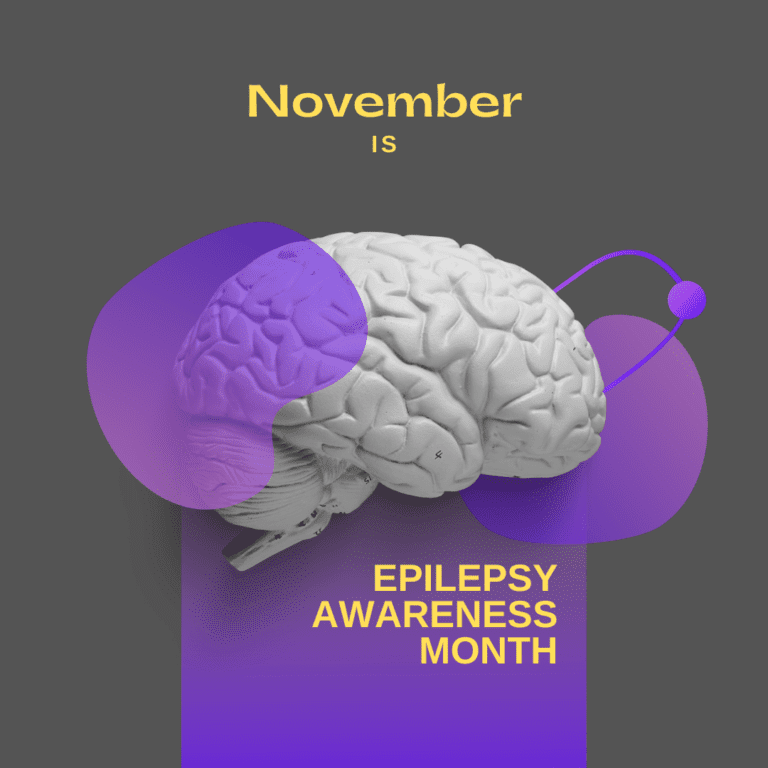National Epilepsy Awareness Month is a time to learn more about epilepsy and how it affects people of all ages. It also gives us an opportunity to recognize the many ways we can help those with epilepsy and their caregivers, as well as stand in solidarity with them. The theme for this year’s National Epilepsy Awareness Month (NEAM) is “#RemoveTheFilter.” This year’s NEAM theme highlights the need for increased public awareness of epilepsy and its effects on people of all ages; encourages participation in activities that celebrate life; and recognizes caregivers who make a difference every day. It also provides opportunities for individuals, communities, organizations and businesses to join us in raising awareness.
One way that Premier Neurology would like to raise awareness about epilepsy is to inform people that epilepsy is a spectrum condition, meaning that there is a wide range of seizure types and controls that vary among people diagnosed with epilepsy. Anyone who has experienced two unprovoked seizures that cannot be traced to a reversible medical condition, can be diagnosed with epilepsy. Within the larger diagnosis of epilepsy, there are four different types of epilepsy an individual can be diagnosed with:
Types of Epilepsy
Focal Epilepsy
Focal Epilepsy is a type of epilepsy in which seizures originate within one area on one side of the brain. There are four types of seizures associated with focal epilepsy that were formerly called “partial seizures”:

- Focal aware seizures (formerly simple partial seizures): when a person is aware of what is happening during the seizure.
- Focal impaired awareness seizures (formerly called complex partial seizures): when a person is confused or unaware during the seizure.
- Focal motor seizures: characterized by movement of some kind. Could be spasms, walking, twitching, smacking lips, rubbing hands, etc.
- Focal non-motor seizures: characterized by sudden changes in emotions or thought patterns. For example, intense or strange feelings accompanied by goosebumps, increased heart rate, or changes in temperature.
Generalized Epilepsy
Characterized by seizures that start on both sides of the brain or quickly affects both sides. There are two types of seizures associated with generalized epilepsy:
- Generalized motor seizures (formerly grand mal): characterized by uncontrollable and sometimes dramatic movements that cause the muscles to stiffen and jerk.
- Generalized non-motor seizures (formerly petit mal): characterized by periods of “absence” where a person may stare blankly off into space and experience repetitive movements.
Unknown if Generalized or Focal Epilepsy
A diagnosis of epilepsy without a definitive type. Someone may be diagnosed with “unknown generalized or focal epilepsy” in cases where test results are not indicative of either type, or if there were no witnesses to the seizure. Oftentimes, this diagnosis is temporary until more information is obtained that can yield a diagnosis of either generalized or focal epilepsy.
Epilepsy Syndromes
In addition to epilepsy types, some epilepsy cases are also defined by a group of features that occur together. These are known as epilepsy syndromes. Epilepsy syndromes are defined by features such as the type of seizures, age when seizures begin, part of the brain involved, genetic information, and others. It is important to note that epilepsy syndromes are different from the type of epilepsy. In fact, epilepsy syndromes are often more specific than epilepsy types. While there are only four main types of epilepsy, there are more than 30 known epilepsy syndromes, including:

- Childhood Absence Epilepsy
- Benign Rolandic Epilepsy
- Doose Syndrome
- Dravet Syndrome
- Early Myoclonic Encephalopathy
- Epilepsy in Infancy with Migrating Focal Seizures
- Jeavons Syndrome
- Epilepsy with Generalized Tonic-Clonic Seizures Along
- Epilepsy with Myoclonic-Absences
- Epileptic Encephalopathy with Continuous Spike and Wave During Sleep (CSWS)
- FIRES: Febrile Illness-Related Epilepsy Syndrome
- Genetic Epilepsy with Febrile Seizures Plus
- Infantile Spasms (West Syndrome)
- Juvenile Absence Epilepsy
- Juvenile Myoclonic Epilepsy
- Landau-Kleffner Syndrome
- Lennox-Gastaut Syndrome
- Myoclonic Epilepsy of Infancy
- Ohtahara Syndrome
- Panayiotopoulos Syndrome
- Progressive Myoclonic Epilepsies
- Reflex Epilepsies
- Self-Limited Familial and Non-Familial Neonatal-Infantile Seizures
- Self-Limited Late-Onset Occipital Epilepsy (Gastaut Syndrome)
- Sleep-Related Hypermotor Epilepsy (SHE)
- Temporal Lobe Epilepsy
By looking at the length of this list alone, one can see just how varied an epilepsy diagnosis really is and how it can affect people in different ways. Unfortunately since epilepsy is so varied, there is not a one-size-fits-all form of treatment. Certain medications may be effective in managing a particular type of epilepsy, while different medications may work better for others. There are even cases where surgery may be preferable to medication. By grouping collections of symptoms into epilepsy syndromes, the hope is that more effective treatments can be developed that address the specific set of symptoms an individual is experiencing.
Epilepsy is a complex neurological disorder with many different types and syndromes. There are more than 30 known epilepsy syndromes, but only four main types of seizures (generalized, focal, unknown generalized or focal epilepsies). The hope is that by grouping collections of symptoms into epilepsy syndromes, the medical field will be able to develop effective treatments for each individual case.

Dr. Kashouty, a diplomate of the American Board of Psychiatry and Neurology (ABPN), practices general neurology with fellowship trained specialization in clinical neurophysiology. Dr. Kashouty finds the form and function of the nerves and muscles the most interesting part of neurology, which is what led him to specialize in neurophysiology with more emphasis on neuromuscular conditions. He treats all neurological diseases, but his main focus is to treat and manage headaches, movement disorders and neuromuscular diseases.




